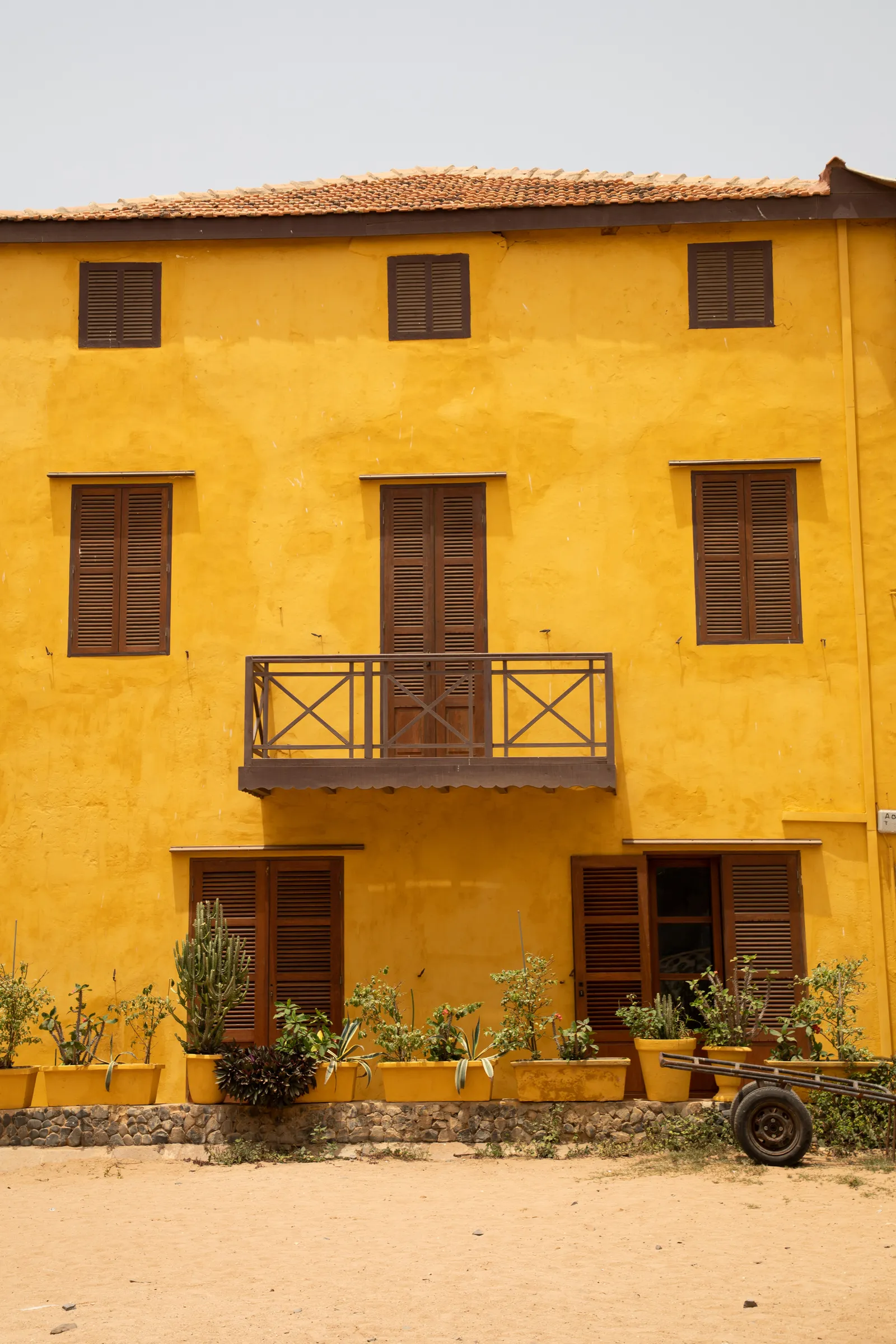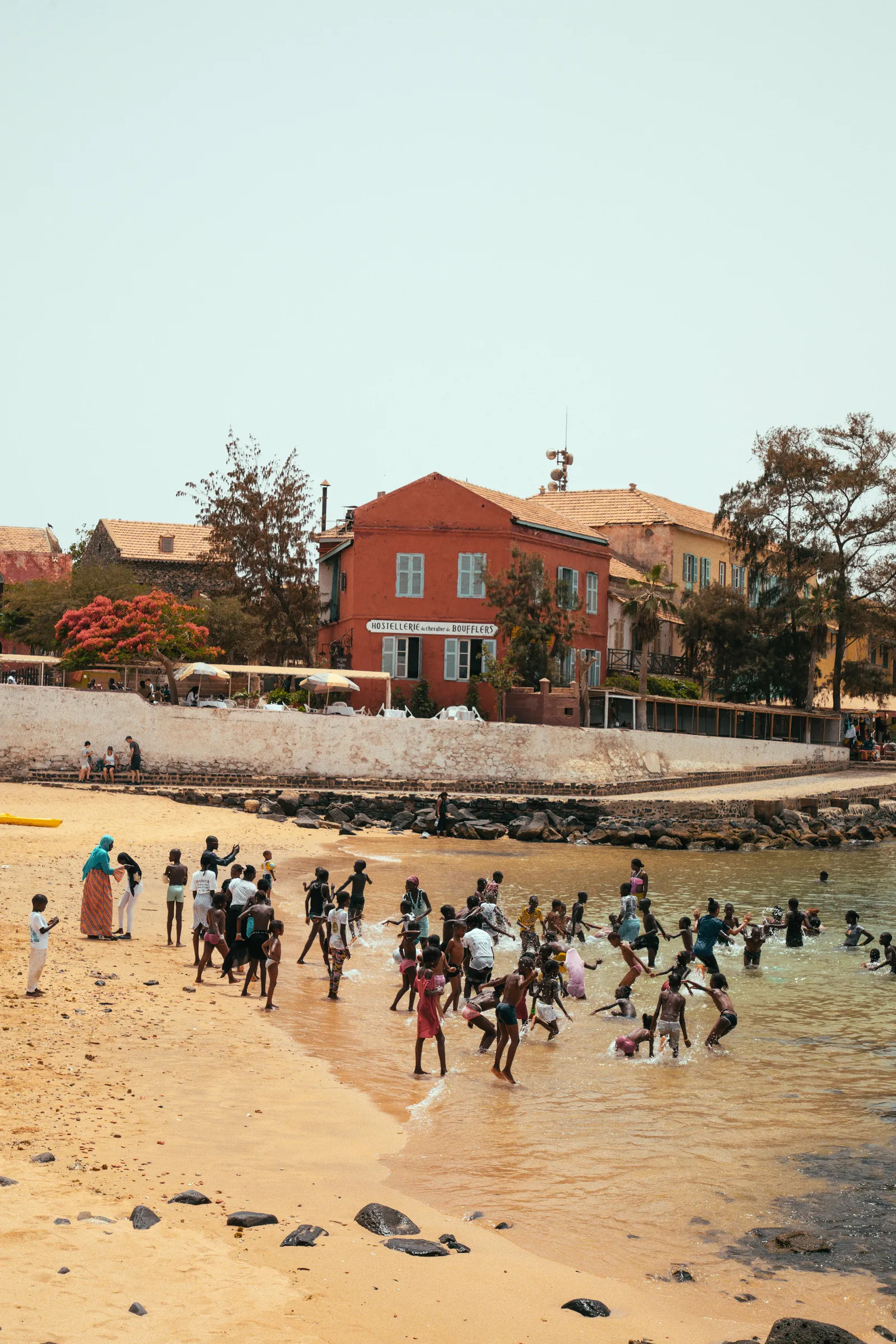In Dakar, Style Is a Lived Experience
- P2A
- Dec 9, 2024
- 5 min read
Why Senegal’s capital is South African photographer Trevor Stuurman’s favorite African city to visit.

Photo: Trevor Stuurman

By Arati Menon
When photographer Trevor Stuurman first traveled to Dakar for Fashion Week in 2018, he wasn’t expecting to fall in love quite as hard as he did. After all, the visual artist and photographer from South Africa—and one of the continent’s most sought-after creatives—has spent years documenting the most dynamic cities and influential tastemakers—Barack Obama, Naomi Campbell, and Beyonce among others—around the world. Still, no place in the world entices him quite the way Senegal does. “Dakar is my favorite place in the world to visit,” he says.
Voted one of TIME Magazine’s Next Generation Leaders in 2021, Stuurman has spent his career challenging stereotypes and building powerful narratives around African excellence—and Dakar’s distinct creative energy has lured him back several times since. “Dakar is so artistic, and you feel it from the minute you arrive. Art here starts when you arrive at the airport and carries on into its streets; it’s in the people that you first encounter and what they’re wearing,” he explains.
A large part of the visual artist's recent work has centered around celebrating diverse Pan-African personalities—his quarterly publication The Manor is a striking catalog of contemporary African culture—and in Dakar, home to the continent's largest biennial and one of its oldest fashion weeks, he has found inspiration aplenty. “Everyone is always dressed up in Dakar—in a way where beauty is not limited to a special occasion, but is a way of life,” says Stuurman, himself a style icon and once voted GQ’s Best Dressed. Well-dressed locals like architect and art director Mamy Tall and fashion designer Khadija Aisha Ba make repeat appearances in his Dakar stills—and he credits them with opening his eyes to the city's vibrant communities and joyful style. “The people I’ve met there are so giving of their time,” he says.
While it was fashion that first took Stuurman to the Senegalese capital, over time it has become a prism for exploring its physical landscape. “The way the buildings are adorned here—their use of color and their architectural style—almost mirrors the fashion, which is beautiful because you almost see this conversation between the two,” he explains. “I remember thinking, when I first came here, that the city almost felt like a movie set, because it just felt so art-directed and staged, but it’s not—it’s effortless.”
Below, Stuurman reflects on some of his favorite photographs from nearly seven years of visiting and documenting Dakar—and the inspiration behind them.
Photos: Trevor Stuurman
“Khadija Aisha Ba, on the left, is the founder of local fashion label L'artisane, and I shot this at Chanel's first runway show in Africa in 2022. Khadija is one of the most stylish people in the world—her style is so consistent and bold and no one dresses like her. She borrows from the past, but with a very future-forward gaze, and that translates in a style that’s bold and expressive. She would, for example, pair a traditional Senegalese boubou with teddy bear pins and cool canvas high-tops. I love the metallic bag she’s carrying in this image, from her own collection, with that giant safety-pin handle.
The metal sculpture, on the right, was outside an official government building (or perhaps it was a bank). I loved the symbolism of the cowrie shell, as a totem of wealth and prosperity. Cowrie shells were traditionally used as currency throughout West Africa, including Senegal, and the fact that they exist as art in a public space serves as a reminder of the currency of culture and the power that exists in our hands.”
Photos: Trevor Stuurman
“This is the Mosque of Divinity, an architectural landmark that's somehow both traditional and modern. It was such a peaceful space, and from the surrounding cliffs, the view over the mosque and the ocean is beautiful. I chose to pair it with this other image of Khadija from when I first met her in 2018, because the blue-greens of her turban pick up on the colors of the mosque. It’s an ode to her way with color and pattern, always unpredictable and never seen before I enjoy fashion that really turns heads, that's unpredictable. I think that the style in Dakar is often quite playful.”
Photos: Trevor Stuurman
“This was shot with Khadija at Gorée Island, a short ferry ride over from Dakar. Our tour guide stopped here to tell us about the bougainvillea—seen all over Dakar—a flower we’ve all grown up with but never stopped to think about. Did you know the colorful parts are not the flower? They’re actually the leaves.
Gorée Island is a deeply complex space, because it's an island with a long, dark history where a lot of people were enslaved. That's also where you find the Door of No Return, which is now a museum and memorial. The island now is a UNESCO heritage site. It's also a striking place, a sun-washed island filled with these quiet moments of beauty.”
Photos: Trevor Stuurman
“Mamy Tall is an architect in Dakar, and each time I visit Dakar, she takes me on these tours of its heritage buildings and precints—she is so well-informed and passionate about the heritage of Dakar and protecting it. Here, she’s standing against a building that was under construction, and they had covered it with these beautiful woven mats creating a lovely backdrop. That’s what I love about Dakar—its resourcefulness, and ability to make beauty out of everyday situations and objects. I love the symmetry between the patterns in her image and the building on the right.”
Photos: Trevor Stuurman
“LaToya Bianca Gerber is a model from Sierra Leone and she’s wearing a brand called Madam Wokie that creates African-inspired garments and accessories. Her dress and head wrap are both complementary and a contrast to Dakar’s rocky coastline. The building on the right is just something we were driving past and I had to ask the cab driver to stop so I could take the picture. It’s such a striking building—and I’m often confronted with these moments when driving or walking around Dakar.”
Photos: Trevor Stuurman
“On the left is a younger version of myself, standing in front of the African Renaissance Monument which was constructed to commemorate Senegal's 50 years of independence from France. I think we don't have a lot of monuments that are quite as, well, monumental on the continent. It’s a powerful piece of art that has so much symbolism, and looks forward into the into the future.
That image on the right is Gorée Island again. It was just an evocative moment where children were playing joyfully by the ocean, in a place where so much trauma existed previously. It was such a pure and moving moment. Some of the buildings on Gorée, as you can see behind the children, are also really beautiful.”
Photos: Trevor Stuurman
“Khadija is in front of a small boutique-style hotel called Sokhamon. It’s one of the first few places she took me to. It has this incredible facade, and beautiful views of the Atlantic. You see a lot of these pastel-colored buildings in Dakar. Sokhamon is in a neighborhood that I really love called Plateau, in the historic heart of Dakar, filled with colonial-era buildings, landmarks, and monuments.”
Photos: Trevor Stuurman
“That’s me in front of the famous Niani restaurant and nightclub, which sadly no longer exists. It was a Dakar nightlife icon and built like a Casamance hut with these arresting black and white graphic drawings. Being in front of the camera sometimes makes me a better photographer, because I'm able to think on behalf of the subject. But even as a photographer, I always dress up, because to me it feels like I’m meeting the art halfway.
The image on the right spotlights Khadija’s boldness. Nothing about her is average. Every piece she has on feels like it’s part of a tailor-made life. It's a bit like Dakar itself—there's simply no place like it.”
Read the original article on Condé Nast Traveler.
















Comments